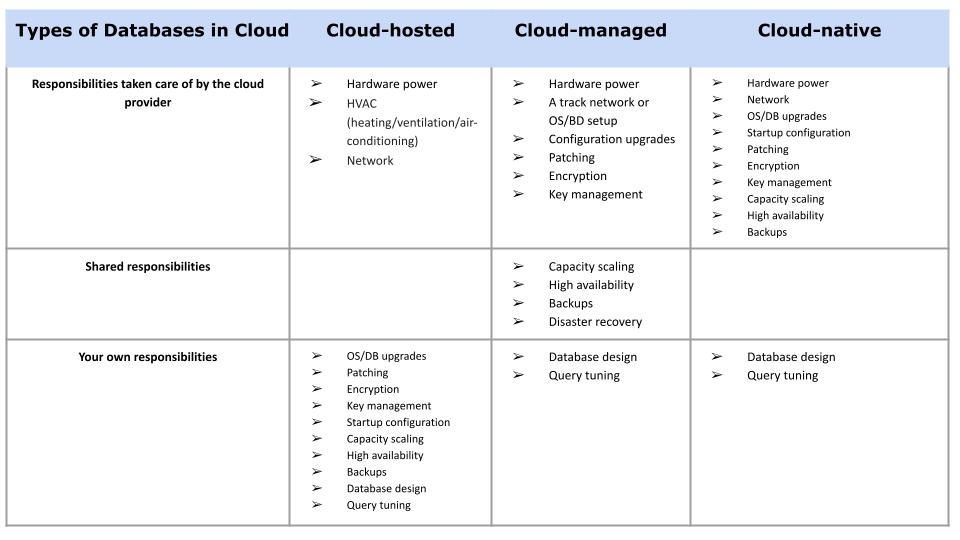Knowing a piece of technology inside out allows you to use and avail of its advantages effectively. However, there comes a point when it's time to abandon older technologies. Your technological choices should change along with paradigm shifts.
"Cloud-Native"—a term that refers to applications built on top of open-source platforms and cloud providers—is a new way of thinking about building modern applications.
In the past, when building an application from scratch, developers went through different steps, like migrating from one language to another or migrating from one application platform to another. With cloud-native applications, you make a big leap forward by skipping all those steps and moving directly into the cloud.
As we delve deeper into the world of cloud computing, many institutions are considering switching from their existing database systems to better cloud-native ones. Yet there is still a lot of confusion about what "cloud-native " means and how it can be applied.
To answer these questions, on 17th November 2022, C-Vision International hosted the CIO Virtual Council in partnership with EPAM systems and Google Cloud. In this virtual council, the moderator Michael Hiskey, Chief Strategy Officer from The Cybersecurity Gatebreakers Foundation, and three other luminaries had an insightful discussion on the topic: "Cloud Native Roadblocks: Why Aren't You Leaving Legacy Database Systems?"
The panel tackled three main questions in the virtual council: what a cloud-native database system is, how it is different from cloud-hosted and cloud-managed database systems, and why companies are considering migrating towards it.
What is a "Cloud-native" database system?
The term cloud-native refers to the concept of developing and sustaining applications to use the distributed computing capabilities provided by the cloud delivery system. Its official definition is given below:
"Cloud-native technologies empower organizations to build and run scalable applications in modern, dynamic environments such as public, private, and hybrid clouds. Containers, service meshes, microservices, immutable infrastructure, and declarative APIs exemplify this approach."
-Cloud Native Computing Foundation
Apps that are cloud-native are created to take advantage of the scale, reliability, and adaptability the cloud offers. These characteristics allow for robust, manageable, and observable loosely connected systems. They enable engineers to quickly and consistently make considerable adjustments.
All of these benefits make the cloud-native database system an attractive option for organizations facing challenges with their current IT infrastructure. On top of being cheaper and more efficient, cloud-native applications are inherently more agile and responsive than their predecessors.
What is the difference between Cloud-hosted, Cloud-managed, and Cloud-native databases?
So you're thinking about migrating your enterprise database into the cloud. What are your options? Which one is best for you?
To find the answer to these questions, you need to understand the different types of database systems in cloud computing.
The major differences between a cloud-hosted database, a cloud-managed database, and a cloud-native database, as described in the virtual council by Stan Drapkin, Chief Cloud Technologist from EPAM Systems, are mentioned in the table below.

Why are organizations migrating towards cloud-native database systems?
Cloud-native database systems are becoming a popular choice among organizations that are looking to modernize their data centers. The three main reasons organizations are moving towards cloud-native database systems are:
- Uses modern distributed technologies such as NoSQL, object storage, and stream processing to provide faster access times and better performance than traditional databases.
- Secures access to data via authentication and authorization mechanisms. This means that only authorized users can access certain information within the cloud-native database system.
- Designed with horizontal scaling in mind, which makes them ideal for environments where there are multiple users accessing data at once.
- Reduced toil/maintenance burden and improved availability/uptime
In the Virtual Council, Stan Drapkin, Chief Cloud Technologist from EPAM Systems, said:
"[...] the cost of the migration itself is not that scary anymore, compared to the alternative."
When asked about the long-term effects of not migrating to the cloud, Paul Miller, the Head of Data Management Solutions from Google Cloud, shared:
"The long-term effects of not migrating come in the form of two primary pejorative situations…The first one is you're getting into a world where staffing is critical… what we've been facing is a world where there are two sorts of tech jobs out there for every person. Supporting these legacy platforms in perpetuity, the longer you stay on them, the more risk you take on trying to keep them staffed, keep them managed, and do more things with them… the second piece of it is from a staffing perspective, some of the negative outcomes of keeping these legacy platforms sort of in place and containerize are, people aren't as excited to work on it."
Cloud-native database systems offer the thrill of a killer duet with the benefits of a multinational music label. In fact, cloud-native databases provide increased scaling capabilities, reduced costs, and greater flexibility with seemingly limitless scalability.
Despite these benefits, migrating from legacy apps to the cloud has its own challenges. When asked about overcoming obstacles when business owners start their cloud journey, Jeff Westenhaver of EPAM Systems noted:
"…the number one component that needs to be there is executive leadership. Assuming that's there, it's really key to do a very deep assessment and understand the applications and databases to know what you can move when you can move it, and how to get started."
As organizations' needs transition and become more sophisticated, replacing existing systems with cloud-native alternatives will become necessary.
While this may mean that some aspects of the system will need to be redeveloped, replacing legacy systems is worth the effort since it will lead to a more stable, flexible, and scalable system in the long run.
C-Vision International will continue to bring together budding and experienced technology professionals looking for the latest insights into the future. Whatever your background, C-Vision will give you the knowledge you need and the opportunity to build new skills for the modern world. Learn more about technological innovations through C-Vision's upcoming events.


